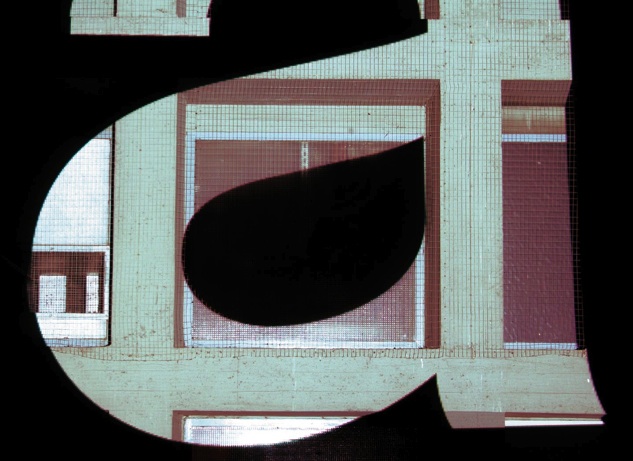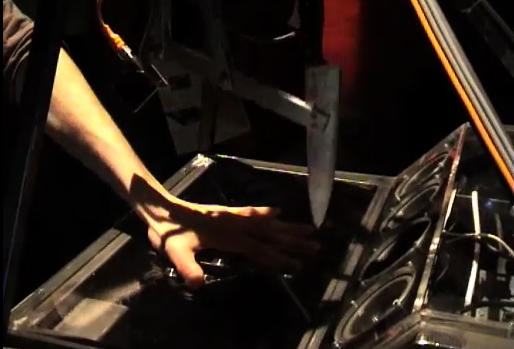In Nature’s Casino
Michael Lewis in New York Times Magazine
Right away, [John Seo] could see the problem with natural catastrophe. An insurance company could function only if it was able to control its exposure to loss. Geico sells auto insurance to more than seven million Americans. No individual car accident can be foreseen, obviously, but the total number of accidents over a large population is amazingly predictable. The company knows from past experience what percentage of the drivers it insures will file claims and how much those claims will cost. The logic of catastrophe is very different: either no one is affected or vast numbers of people are. After an earthquake flattens Tokyo, a Japanese earthquake insurer is in deep trouble: millions of customers file claims. If there were a great number of rich cities scattered across the planet that might plausibly be destroyed by an earthquake, the insurer could spread its exposure to the losses by selling earthquake insurance to all of them. The losses it suffered in Tokyo would be offset by the gains it made from the cities not destroyed by an earthquake. But the financial risk from earthquakes — and hurricanes — is highly concentrated in a few places.
Bringing akzidenz grotesk to the city
Tobias Battenberg, from Germany, made a nice experiment with video projections in several buildings and structures in the city, about the font “akzidenz grotesk”.
Akzidenz grotesk is known as a font that tolerates a lot, that holds out a lot - my plan was to get a proof by the font herself. the font demonstrated her character at its best.
His website
Via Type for you via Monoscope.
The Best House in Paris
Posted by Nicolai Ouroussoff to NYT > Arts.
This effect was amplified by the play of light and sound. By turning on and off the various floodlights outside, you could adjust the mood of the entire house. When the lights are dimmed, for example, the house becomes less theatrical, more tender. Voices too travel through the rooms, so that you are always faintly aware of the presence of the other.
It wasn’t until we arose the next morning, however, that we fully understood Chareau’s choreography. The bathroom floor is raised in certain areas so that as we crossed it, we could catch occasional glimpses of each other before suddenly dropping back out of view.
Sly Stone's Higher Power
Via Kenny G at WFMU’s Beware of the Blog.
Vanity Fair article by by David Kamp on Sly Stone’s reappearance.
“There’s one that’s called ‘We’re Sick Like That,’” he continues. “It says, ‘Give a boy a flag and teach him to salute / Give the same boy a gun and teach him how to shoot / And then one night, the boy in the bushes, he starts to cry / ‘Cause nobody ever really taught him how to die.’”
The obvious allusion to the current war jars me, and I soon realize why: Stone has been absent from the scene for such a duration that it’s hard to imagine that he was with us all along, experiencing all the things we experienced over the years—the fall of the Berlin Wall, the collapse of the Soviet Union, Nelson Mandela’s release from prison, the rise of the World Wide Web, the attacks on 9⁄11, the invasion of Iraq. It’s almost as if he went into a decades-long deep freeze, like Austin Powers or the astronauts in Planet of the Apes. Except he didn’t.
KNIFE.HAND.CHOP.BOT
Via Bruce Sterling at Beyond the Beyond.
Electric contacts are mounted on the support block of the Machine, where the hand is situated. These contacts are activated as soon as the first "nervous sweat" appears that turns the skin into a conductor. Subsequently the computer becomes disturbed by the electric current that is now transmitted via the skin.
This has two effects: on the one hand, sounds are generated by the closure of the contacts (circuit bending) that can either be interpreted as warning or act as an additional source of stress. On the other hand, they can have an effect on the position of the knife which is controlled by the computer and thereby hurt the potential perpetrator of the disturbance.
By 5voltcore
Binary marble adding machine
Via MAKE: Blog.
Matthias Wandel has the coolest project ever, a binary marble computer.
Let There Be Light in Austria's Artificial Sky
When the architects at Skidmore, Owings & Merrill wanted to prove the brilliance of their planned 919-window roof for a new terminal at Singapore's Changi International Airport, they invited officials to Austria for a sneak peek. "It was a hard sell," architect Ross Wimer says of the $1.7 billion plan, "until they stuck their heads inside the building."
Shatner - Conan Remix Video
Posted by Station Manager Ken to WFMU’s Beware of the Blog.
Not that William Shatner needs any help re-inventing himself musically or otherwise, but here’s a remix of him cruising along in his racecar at 160 MPH, and discussing it with Conan O’Brien
The Road to Clarity
Via Daring Fireball.
New York Times Magazine feature by Joshua Yaffa on the typography and design of highway signage, particular regarding Clearview, the new typeface designed to replace Highway Gothic as the standard for signage in the U.S.
Assurance
Schneier on the recent release of the California security review of electronic voting machines, and what CA is doing about the across the board failures:
California Secretary of State Debra Bowen has conditionally recertified the machines for use, as long as the makers fix the discovered vulnerabilities and adhere to a lengthy list of security requirements designed to limit future security breaches and failures. [ …] While this is a good effort, it has security completely backward. It begins with a presumption of security. […] Insecurity is the norm. If any system – whether a voting machine, operating system, database, badge-entry system, RFID passport system, etc. – is ever built completely vulnerability-free, it’ll be the first time in the history of mankind. It’s not a good bet.
So, what to do? Assurance:
Several years ago, former National Security Agency technical director Brian Snow began talking about the concept of “assurance” in security. Snow, who spent 35 years at the NSA building systems at security levels far higher than anything the commercial world deals with, told audiences that the agency couldn’t use modern commercial systems with their backward security thinking. Assurance was his antidote.
Maharajahs in the shopping mall
From Economist.com News Analysis.
Last October the Luxury Marketing Council, an international organisation of 675 luxury-goods firms, opened its India chapter. Its boss, Devyani Raman, described India’s luxury-goods market as “a cupboard full of beautiful clothes with a new outfit arriving every day—it could start to look messy without the right care”. This, she said, included everything from teaching shop assistants appropriate manners to instilling in the Indian public a proper understanding of the concept of luxury. “How do you educate them”, she asked, “about the difference between a designer bag that costs $400 and a much cheaper leather bag that functions perfectly well?”
Quick Cuts, Coarse Letters, Multiple Screens
[Dr. Strangelove’s] frightening absurdity was established in the very first frame of the main title sequence designed by Pablo Ferro.
Via Jim Coudal.
Pop-Up Cities: China Builds a Bright Green Metropolis
From Wired News.
Three years ago, Alejandro Gutierrez got a strange and tantalizing message from Hong Kong. Some McKinsey consultants were putting together a business plan for a big client that wanted to build a small city on the outskirts of Shanghai.
Read more at Wired.
Thrilling Energy Breakthrough: Vivoleum!
Posted by Bruce Sterling to Beyond the Beyond.
June 14, 2007 FOR IMMEDIATE RELEASE EXXON PROPOSES BURNING HUMANITY FOR FUEL IF CLIMATE CALAMITY HITS GO-EXPO Conference organizer fails to have Yes Men arrested.
“We need something like whales, but infinitely more abundant,” said “NPC rep” “Shepard Wolff” (actually Andy Bichlbaum of the Yes Men), before describing the technology used to render human flesh into a new Exxon oil product called Vivoleum. 3-D animations of the process brought it to life.
Childhood Risks: Perception vs. Reality
Via Schneier on Security.
In a garden in Birchington, best friends Holly Prentice and Jojo Roberts, both aged eight, make daisy chains.
The picket fence marks the limit of their play area. They wouldn't dare venture beyond it.
"You might get kidnapped or taken by a stranger," says Jojo.
"In the park you might get raped," agrees Holly.
Unfucking believable.
Absurdist Prank in Bologna
Posted by Bruce Sterling to Beyond the Beyond.
Something very strange is happening at University of Bologna… It seems that the University is organizing a “find the treasure” game of “Crediti Formativi Universitari” , “university credits”.
Best tv show idea evar.
Via Warrenellis.com.
A Dutch TV station says it will go ahead with a programme in which a terminally ill woman selects one of three patients to receive her kidneys. Political parties have called for The Big Donor Show to be scrapped, but broadcaster BNN says it will highlight the country’s shortage of organ donors. The programme, from Big Brother creators Endemol, is due to be screened on Friday night.
Update: It was a hoax. Too bad.
Going, Going, Gone
Via ongoing.
In Toronto’s Globe and Mail, a William Gibson elegy (probably to vanish behind the paywall), lamenting cities crushing their history and our memories without even noticing.
The experience taught me something about the past, how it moves into and inhabits the future. Or rather, about how it should, ideally. Because it doesn’t, always. When I first saw London, and Paris, I understood that (though, they too would find their own regoodings, further along).
Ceiling Height Alters How You Think
Via /..
A recent study at the University of Minnesota suggests that ceiling height affects problem-solving skills and behavior by priming concepts that encourage certain kinds of brain processing.
The Rambling Ghost of Global Business
Posted by Bruce Sterling to Beyond the Beyond.
*I’m jetlagged in Silicon Valley, but after reading this, I’m counting my many blessings. Thirty years ago this month, Ram Charan (pronounced “Rahm Scha-RON”) quit a tenured professorship at Boston University to devote himself full-time to consulting. Today he’s alone…



